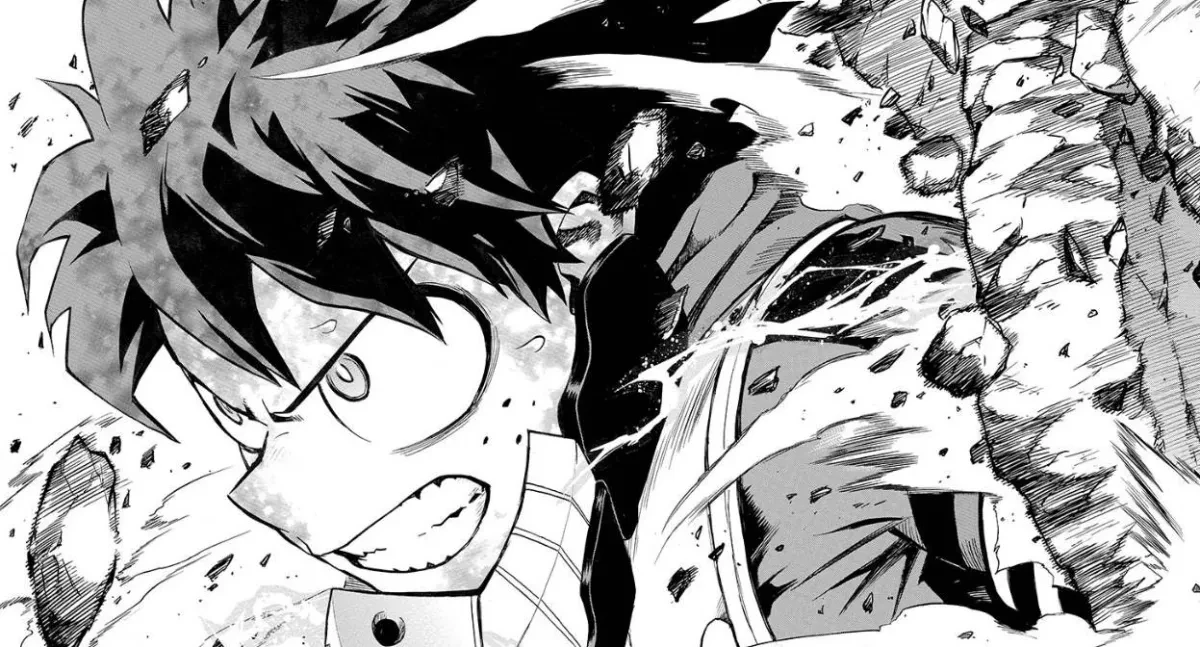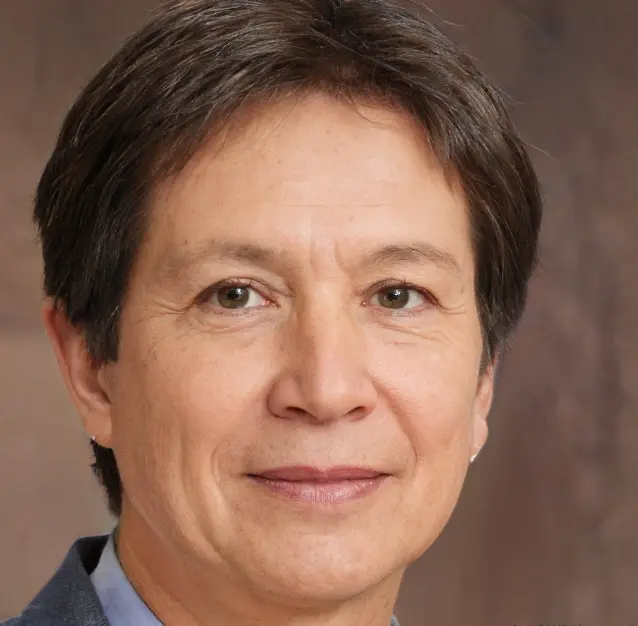Embracing Heroism in a Superpowered World
“My Hero Academia” manga, created by Kohei Horikoshi, has captured the hearts of readers worldwide with its thrilling superhero narrative, complex characters, and profound exploration of heroism. In this comprehensive article, we embark on an in-depth journey through the world of “My Hero Academia” manga, delving into its origins, plot intricacies, character development, thematic richness, artistic achievements, and enduring impact on the manga and anime landscape.
Origins and Evolution
The Visionary Creator: Kohei Horikoshi
Kohei Horikoshi, the mastermind behind “My Hero Academia” manga,,” began his journey as a mangaka with a passion for superheroes and storytelling. Inspired by classic Western comics and Japanese manga traditions, Horikoshi envisioned a world where individuals with unique superpowers, known as Quirks, navigate the challenges and responsibilities of heroism.
Serialization and Global Phenomenon
“My Hero Academia” manga,” made its debut in Weekly Shonen Jump in July 2014, quickly gaining traction among readers. The series’ compelling narrative, dynamic action sequences, and diverse cast of characters resonated with audiences, leading to its widespread popularity and eventual adaptation into an anime series.
Cultural Impact and Worldwide Fandom
The cultural impact of “My Hero Academia” manga, transcends borders, attracting a diverse and passionate fandom globally. The series’ themes of heroism, friendship, perseverance, and self-discovery have struck a chord with readers of all ages, making it a beloved staple in the manga and anime community.
Plot Exploration: The Hero’s Journey
Setting the Stage: A World of Heroes and Villains
“My Hero Academia” manga, is set in a world where nearly 80% of the population possesses Quirks, ranging from extraordinary abilities to minor enhancements. In this superpowered society, aspiring heroes train in prestigious institutions like U.A. High School to become professional heroes and protect society from villainous threats.
The Protagonist’s Path: Izuku Midoriya’s Rise
At the heart of the series is Izuku Midoriya, a Quirkless boy with an unwavering dream of becoming a hero like his idol, All Might. Izuku’s encounter with All Might, the Symbol of Peace and the world’s greatest hero, sets him on a transformative journey as he inherits All Might’s Quirk, One For All, and enters U.A. High School.
Dynamic Characters and Interactions
“My Hero Academia” manga, features a rich tapestry of characters, each with their unique Quirks, personalities, and aspirations. From the hot-headed but determined Katsuki Bakugo to the calm and analytical Shoto Todoroki, the series explores the complexities of heroism through the lens of its diverse cast and their evolving relationships.
The Hero Society and Its Challenges
The manga delves into the intricacies of the hero society, including the Hero Public Safety Commission, Pro Hero Rankings, and the ongoing struggle against villainous organizations like the League of Villains. Themes of morality, justice, and the consequences of wielding power are woven into the narrative, adding layers of depth and intrigue.
Themes of “My Hero Academia” manga,
Pursuit of Heroism and Symbolism
“My Hero Academia” manga, celebrates the ideals of heroism, emphasizing courage, selflessness, and standing up for what is right. Characters like Izuku Midoriya and All Might embody these virtues, inspiring others and symbolizing hope in times of adversity. 
Friendship and Teamwork
Friendship and teamwork are fundamental themes in “My Hero Academia” manga, highlighting the importance of collaboration and mutual support. The bonds forged between classmates at U.A. High School, especially in hero teams like Class 1-A, showcase the strength that comes from unity and trust.
Overcoming Adversity and Growth
The manga explores the journey of characters as they face personal challenges, confront their fears, and grow stronger through adversity. From overcoming physical limitations to battling inner demons, “My Hero Academia” manga, champions resilience, determination, and the capacity for change.
Legacy and Inheritance
The concept of legacy plays a significant role in the series, particularly concerning Quirk inheritances like One For All and familial legacies such as the Todoroki family’s dynamics. The interplay between past, present, and future generations underscores themes of identity, responsibility, and the impact of one’s choices.
Artistic Mastery: Horikoshi’s Visual Craftsmanship
Character Designs and Expressions
Kohei Horikoshi’s artistic prowess shines through in his intricate character designs and expressive illustrations. From hero costumes to villainous aesthetics, each character’s visual representation enhances their personality and narrative significance. Facial expressions convey a wide range of emotions, adding depth and realism to the storytelling.
Dynamic Action Sequences
The manga’s action sequences are a spectacle of kinetic energy and strategic combat. Horikoshi’s ability to choreograph dynamic battles, showcase Quirk abilities, and depict intense showdowns between heroes and villains captivates readers and brings the narrative’s high-stakes moments to life.
World-Building and Environments
“My Hero Academia” manga, boasts immersive world-building, from bustling cityscapes to training grounds and villain hideouts. The diverse environments reflect the societal dynamics of the hero world, offering rich backdrops for character interactions, plot developments, and thematic exploration.
Adaptations and Multimedia Success
Anime Adaptation and Spin-Offs
The anime adaptation of “My Hero Academia” manga, has garnered acclaim for its faithful adaptation, stellar animation, and compelling voice performances. Spin-off manga and light novels, such as “My Hero Academia” manga, Vigilantes” and “My Hero Academia” manga,: School Briefs,” expand the series’ universe and explore supplementary narratives.
Video Games and Merchandise
“My Hero Academia” manga, has inspired a range of video games, from action-packed brawlers to strategic adventures, allowing fans to immerse themselves in heroics. Merchandise, including figurines, apparel, and collectibles, celebrates the diverse cast and iconic symbols of heroism from the series.
Cultural Impact and Legacy
Global Popularity and Fan Engagement
“My Hero Academia” manga, has transcended cultural boundaries, gaining a dedicated fanbase worldwide. Fan art, cosplay, fanfiction, and community events showcase the series’ enduring appeal and the creative contributions of its passionate fandom.
Representation and Diversity
The manga’s diverse cast, featuring characters of various backgrounds, Quirks, and motivations, promotes representation and inclusivity. Themes of diversity, acceptance, and embracing individuality resonate with readers from different cultures and experiences.
Educational and Inspirational Value
Beyond entertainment, “My Hero Academia” manga,offers educational and inspirational value. Its themes of heroism, personal growth, and overcoming obstacles can inspire readers of all ages to pursue their dreams, stand up for justice, and believe in their potential to make a positive impact.
Conclusion: A Heroic Legacy Continues
“My Hero Academia” manga, manga stands as a testament to the enduring allure of heroism, the power of dreams, and the impact of storytelling on a global scale. Through its compelling narrative, diverse characters, thematic depth, and artistic excellence, the series has carved a lasting legacy in the hearts of fans and the annals of manga history. As the heroic journey unfolds with each
Frequently Asked Questions about “My Hero Academia” Manga
Q: What is “My Hero Academia” manga about?
A: “My Hero Academia” manga follows the story of Izuku Midoriya, a Quirkless boy who dreams of becoming a hero in a world where almost everyone has superpowers known as Quirks.
Q: Who is the creator of “My Hero Academia” manga?
A: The manga is created by Kohei Horikoshi, a renowned mangaka known for his intricate storytelling and vibrant character designs.
Q: How many volumes are there in the “My Hero Academia” manga series?
A: As of now, the manga has over 30 volumes, chronicling the journey of Izuku Midoriya and his classmates at U.A. High School.
Q: What age group is “My Hero Academia” manga suitable for?
A: “My Hero Academia” is classified as a shonen manga, primarily targeting a young male audience, but it has broad appeal across different age groups due to its compelling story and themes.
Q: Is “My Hero Academia” manga different from the anime adaptation?
A: While the core storyline remains the same, there may be minor differences between the manga and anime adaptation, including additional scenes or character development in either medium.
Q: Are there English translations available for “My Hero Academia” manga?
A: Yes, the manga has been officially translated into English and is widely available for purchase both in physical and digital formats.
Q: How often is “My Hero Academia” manga released?
A: “My Hero Academia” manga is serialized in Weekly Shonen Jump magazine in Japan and typically releases new chapters weekly.
Q: What are the main themes explored in “My Hero Academia” manga?
A: The manga delves into themes such as heroism, friendship, perseverance, identity, and the responsibilities that come with having powers.
Q: Are there spin-offs or related manga series based on “My Hero Academia”?
A: Yes, there are spin-off manga series such as “My Hero Academia: Vigilantes” that expand on the universe and explore side stories and characters.
Q: How has “My Hero Academia” manga impacted the manga and anime industry?
A: “My Hero Academia” has had a significant impact, contributing to the resurgence of superhero-themed manga and inspiring other creators and studios in the industry.

Mr. Tanaka: Your Guide to the World of Manga on Vyvymangaa:
Meet Mr. Tanaka, the passionate manga enthusiast behind Vyvymangaa. With a deep love for all things manga, Mr. Tanaka writes captivating blogs about new manga releases, the latest manga news, exclusive interviews with manga authors, and upcoming manga events. Join him on Vyvymangaa for an insider’s look into the vibrant world of mangas, where each post is a gateway to the exciting universe of your favorite stories and creators. Email at: [email protected]
